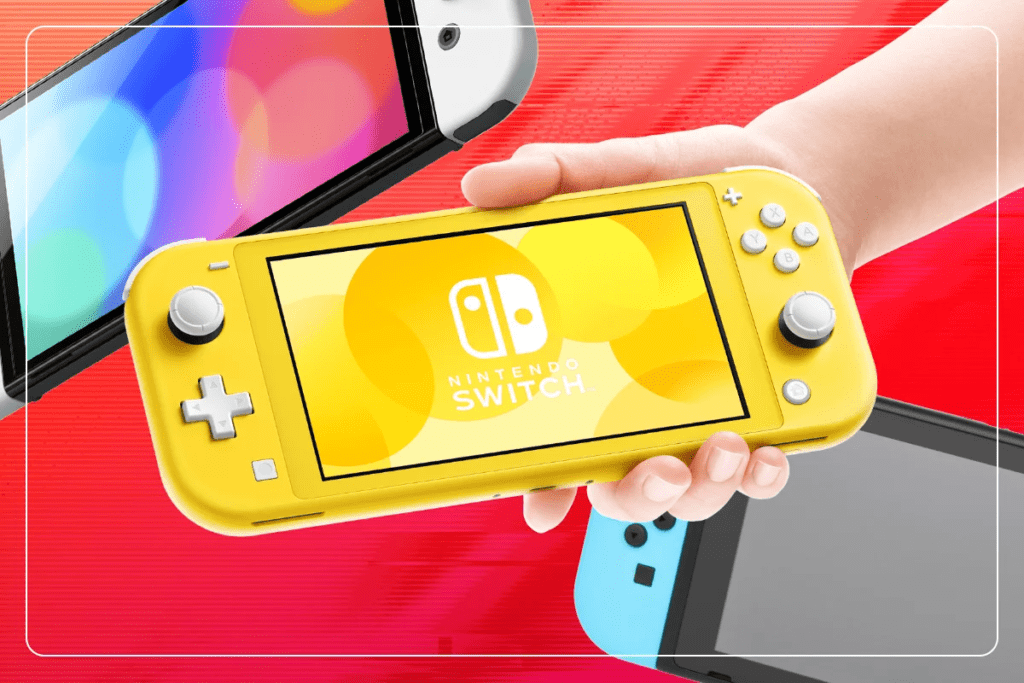Switch 2
For some time now, Nintendo has been uncertain about when and how to launch a successor to the hugely successful but increasingly outdated Nintendo Switch. Recent media reports indicate that the release of its successor will face further delays.
Switch 2: A New Chapter in Gaming

The release date for the Switch successor (tentatively referred to as “Switch 2” in this article) was initially reported to be in the second half of 2024, but according to reports from VGC, Eurogamer, and the Nihon Keizai Shimbun, the release date is now postponed to 2025. It appears that it has been delayed until March 2025, pushing its release back by at least another year.
Revisiting the Nintendo Switch: Introducing an Organic EL Model

Nintendo finds itself in an unusual position with the Switch, having sold 139 million units since 2017 and dominating the market for 1.5 generations. Despite its success, deciding when to step back has become challenging. As a half-hearted measure, they are considering introducing an organic EL model. While the Switch’s appeal isn’t primarily graphical, its performance is increasingly inadequate for newer titles.
The Wii U as a Game Console Successor to the Switch

Nintendo has a history of struggling to transition hugely successful game consoles to the next generation. A notable example is the Wii U, introduced as a successor to the mega-hit Wii (which the Switch has now surpassed in sales). However, the Wii U ended with disappointing results. Nintendo aims to avoid repeating this situation with its upcoming console transition.
However, this time around, there are significant differences to consider. Firstly, the Wii’s motion controls were perceived by some as merely a “gimmick,” a novelty that didn’t define a new generation of game consoles. Nintendo then introduced another “gimmick” with the Wii U in the form of the gamepad, but this attempt ultimately failed to capture the market.
The Switch: A Gaming Gigantic Feature

Indeed, the Switch’s unique selling point of combining both stationary and portable gaming is far from being a mere gimmick; it’s a highly practical and functional feature. Even with the introduction of a successor like the Switch 2, it’s expected that Nintendo will maintain this core aspect of a hybrid console that can function both as a home console and a handheld device, while likely enhancing its performance capabilities.
Rumors suggest that the Switch 2 may even achieve graphics performance on par with the PlayStation 4. However, unlike some competitors who focus heavily on hardware specifications, Nintendo’s success with the consistently underpowered Switch has shown that raw hardware performance isn’t their primary concern. Instead, Nintendo’s emphasis has historically been on delivering innovative gameplay experiences and unique features that resonate with their audience.
The Switch 2: A Mistaken Destination?

Nintendo faces a challenging decision with the Switch 2, given the historical pitfalls of previous console transitions. The Wii to Wii U transition was notably problematic, and even though the GameCube remains well-regarded, it sold fewer units than its predecessor, the Nintendo 64.
Looking ahead, Nintendo may delay announcing the Switch 2 until after the 2024 holiday season to avoid impacting current Switch sales. This strategy allows them to maximize profits from the Switch while preparing for the successor’s release in 2025.
The success of the Switch 2 is uncertain, and Nintendo must carefully navigate evolving consumer expectations and technological advancements to ensure a smooth transition and sustained success in the gaming market.
